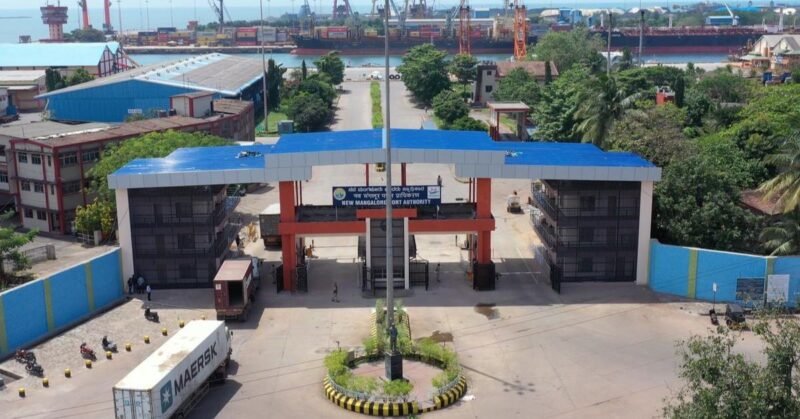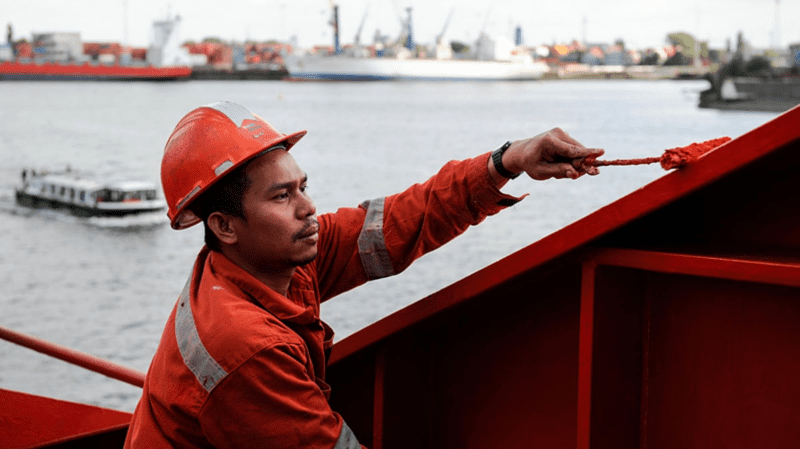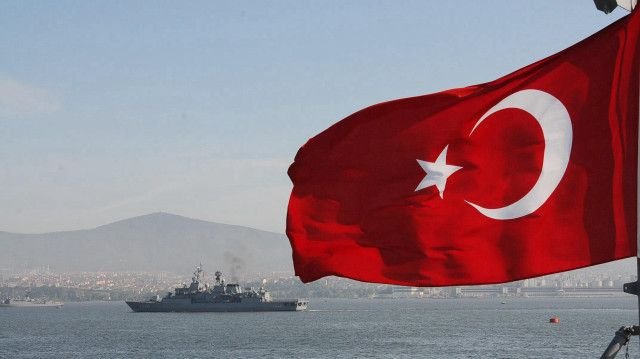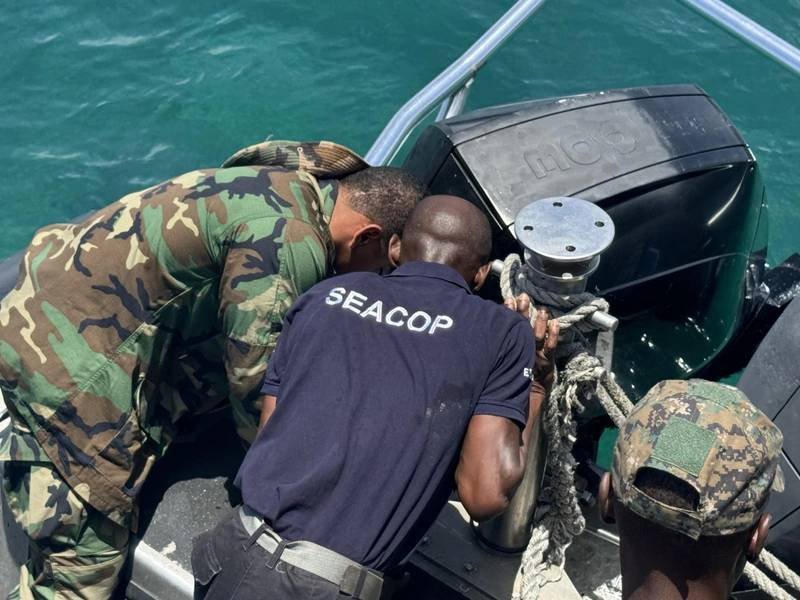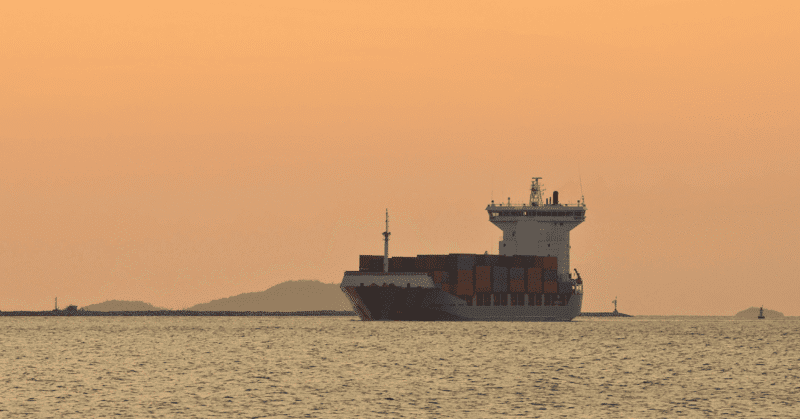Following Stories compiled in this News Digest for the week from 14 Feb 2022 to 20 Feb 2022 in descending order:
- UN’s Contact Group on Somali Piracy Changes its Mandate
- India, UAE agree to jointly fight terror, enhance maritime security coop
- Port of Antwerp moves forward with drone project
- India’s first water taxi service inaugurated in Mumbai
- Viral Video: Wave Crashes Through Ferry’s Windows in Germany
- India: Seafarer training certificates’ validity extended by 12 months
- India Gets First National Maritime Security Coordinator
- Alliance formed for standardised e-Bill of Lading
- First electric E-Pusher Type M enables zero-emission inland shipping
- India, Phillipines agree on having a simplified visa regime
- India, Australia, and Singapore to jointly address marine pollution
- Accelleron – the new face of ABB Turbocharging
- World’s First LH2 shipment exported via Suiso Frontier
- Philippines: Marina starts giving online certificates for seafarers
- New safety rules for enclosed spaces on board vessels
- Bullying And Harassment A Challenge For The Maritime
- EU Joined By 13 Countries To Protect Ocean Biodiversity
UN’s Contact Group on Somali Piracy Changes its Mandate
20 Feb 2022
The decline in piracy off the coast of Somalia is one of the recent success stories for the maritime industry. It has demonstrated how stakeholders can unite to solve some of the complex challenges facing the industry.

At the helm of this anti-piracy success is the Contact Group on Piracy off the Coast of Somalia (CGPCS). The CGPCS was created in 2009 following a UN resolution to coordinate political, military, industry and non-governmental efforts to end piracy along the Somali coast. The Contact Group has over 80 member organizations drawn from governments, NGOs and shipping companies.
In January, CGPCS members held their 24th Plenary Session in Kenya. The main question on the table was whether it was time for CGPS to fold up. Alternatively, how could the contact group re-align to address other emerging issues within the Western Indian Ocean?
Although Somali piracy may be on the decline, the rise in IUU (illegal, unreported and unregulated) fishing and drug trafficking, pose considerable potential for another wave of maritime insecurity within the Western Indian Ocean seaboard. The Northern Mozambique insurgency has also been a major source of concern for maritime players.
Unfortunately, for frameworks such as CGPCS, they were created purposefully for anti-piracy efforts. Going forward, the Contact Group’s future lies in its ability to transform its antipiracy vision into a holistic maritime security strategy. Piracy and armed robbery at sea are consequences of other factors, primarily governance gaps in land and marine resources.
In the last CGPCS meeting, a report prepared by the Republic of Seychelles, the chair of CGPCS’s Strategic Planning and Steering Working Group, entailed a proposal on how to develop a new strategic vision that aligns with emerging threats within the broader Western Indian Ocean region.
As a result, CGPCS agreed to change its name to the Contact Group on Illicit Maritime Activities in the Western Indian Ocean. Reference
India, UAE agree to jointly fight terror, enhance maritime security coop
19 Feb 2022
India and UAE on Friday agreed to enhance maritime cooperation contributing to maintenance of peace and security in the region and affirmed to fight cross-border terror.

The decision to enhance maritime security cooperation was arrived at the India-UAE virtual summit and assumes significance amid growing interests of both in the Indian Ocean Region.
In this context PM Narendra Modi condemned terror attacks in UAE and noted that both countries will work “shoulder to shoulder” on dealing with terrorism. In this context, the two sides emphasized the importance of promoting the values of peace, moderation, coexistence and tolerance among peoples, and stressed the need for all forms of terrorism, extremism, violence, hatred, discrimination and incitement to be renounced.
At the Summit PM Narendra Modi congratulated Crown Prince of Abu Dhabi Sheikh Mohammed bin Zayed Al Nahyan for a successful Dubai Expo and lauded his “personal role” in strengthening ties. The PM also mentioned about UAE companies keenness to invest in J&K during virtual summit.
The decision to enhance maritime security cooperation was arrived at the India-UAE virtual summit and assumes significance amid growing interests of both in the Indian Ocean Region. Reference
Port of Antwerp moves forward with drone project
19 Feb 2022
The Antwerp Port Authority is proceeding with plans to create a network of automated drones to support port operations, having agreed a deal with the 6th NeTWorK consortium, a collaboration between DroneMatrix, Proximus and SkeyDrone, for the roll-out.

The ‘D-Hive’ project framework aims to provide the Port Authority with the ability to draw up flight plans and routes remotely, set the purpose and desired output (photos, measurements, live stream, etc.) of the flight, and manage authorisation requests.
The drones will be capable of being deployed without manual intervention to support a number of processes, including, for example, the detection of oil slicks and floating debris, infrastructure inspections, safety coordination, vessel traffic management, incident response, site monitoring, environmental inspections and asset management.
“The D-Hive innovative drone project makes Port of Antwerp the first port authority in the world to offer operational drone capacity on such a big scale,” said Annick De Ridder, Antwerp Alderman responsible for the port.
“A network of automatic drones that carry out flights at strategic places in the port offers considerable added value, in terms of security as well as efficiency. This demonstrates that we are giving concrete shape today to the smart port of tomorrow.”
The 6th NeTWorK consortium was founded at the end of 2020 by hardware and software developer DroneMatrix, telecom operator Proximus and the drone air traffic service provider SkeyDrone. Reference
India’s first water taxi service inaugurated in Mumbai
18 Feb 2022
The long-awaited water taxi services connecting the twin cities, Mumbai and Navi Mumbai, first of its kind in India, was flagged off by Union Shipping Minister Sarbananda Sonowal in the presence of Chief Minister Udhav Thackeray, on Thursday.

The services will commence the Domestic Cruise Terminal (DCT) and will connect the nearby locations at Nerul, Belapur, Elephanta island and Jawaharlal Nehru Port Trust (JNPT).
Addressing the gathering, Sonowal lauded the Mumbai Maritime Board and Central & State agencies for completion of the projects which bring benefits to the citizens, boost tourism and opens avenues for employment generation.
“Sagarmala Programme has undertaken a range of projects across an array of categories such as port modernization, rail, road, cruise tourism, RORO & passenger jetties, fisheries, coastal infrastructure, skill development. 131 projects worth Rs. 1.05 lakh crore has been identified for implementation in Maharashtra,” the Union Minister said.
The water taxi services promise a comfortable, stress-free journey which is time-saving and eco-friendly. The services are also expected to give a major boost to the tourism sector, especially the travel to the historic Elephanta Caves from Navi Mumbai.
The newly constructed Belapur Jetty, built at a cost of Rs. 8.37 crore, was funded in the 50-50 model under the Sagarmala scheme of the Ministry of Ports, Shipping and Waterways. The jetty will enable movement of vessels to locations such as Bhaucha Dhakka, Mandwa, Elephanta and Karanja.
The union minister thanked the Maharashtra government for their active role in the development of the infra projects. “India’s is getting faster under the PM Gati Shakti National master Plan. Under the leadership of Prime Minister, Narendra Modi, I believe we can achieve much as Team India, working with the spirit of brotherhood and oneness,” the minister concluded. Reference
Viral Video: Wave Crashes Through Ferry’s Windows in Germany
18 Feb 2022
Some dramatic video is going viral today showing a large wave crashing through the windows of a passenger ferry in Germany.
https://www.youtube.com/watch?v=MrNA4vGS06g
The incident took place on Thursday onboard a ferry operating on the river Elbe between Hamburg and Finkenwerder.
In the video, which was filmed by a passenger in the ferry’s main cabin, you can see waves breaking over the bow before one bursts through the windows to the shock of about 10 passengers in the cabin at the time. A few sitting up front definitely got the worst of it and all scrambled towards the exit once they realized what was happening.
One person may have sustained minor injuries. Reference
India: Seafarer training certificates’ validity extended by 12 months
17 Feb 2022
The directorate general of shipping (DGS), Mumbai, has extended the validity of the Standards of Training, Certification and Watchkeeping (STCW) certificate for seafarers by 12 months in certain cases on some terms and conditions.
The move is expected to benefit a large number of seafarers.

The validity of the certificates were restricted to 18 months from date of issue for certain STCW courses after completing the 3-tier programme, but without undergoing practical training at the maritime training institutes.
“DGS has received representations from various stakeholders requesting to address the difficulties of all those seafarers whose 18-month valid certificates are expiring in the coming months as during the current wave of the Covid-l9 pandemic some seafarers have not been able to complete the requisite practical training to obtain the five-year valid certificate,” DGS said in its order dated February 15, and announced the 12-month extension for the STCW certificates issued with a validity of 18 months.
However, the extension will be applicable for certain cases.
In case of seafarers who have completed six months of sea-service within the validity of 18 months STCW certificate, their certificate stands extended by 12 months from date of expiry. For seafarers currently on board, their certificates stand extended till sign-off or 12 months, whichever is earlier. In case of seafarers who are currently ashore and intend to join ship on or before February 28, their certificates stand extended till sign-off or 12 months, whichever is earlier. However, for those currently ashore and intending to join ship on or after March 1, their certificates stand extended by 12 months from the date of expiry provided these seafarers complete the DGS e-learning course (Tier-I) at no additional cost for obtaining such extension, the order states. Reference
India Gets First National Maritime Security Coordinator
17 Feb 2022
In a significant move, the government has appointed Vice Admiral (retd) G Ashok Kumar as India’s first national maritime security coordinator with a mandate to ensure cohesion among various key stakeholders with an overall objective to strengthen the country’s maritime security.
Late last year, the Cabinet Committee on Security had cleared the proposal for the creation of the post.

The appointment of G Ashok Kumar, who is a former Navy vice chief, is seen as part of India’s consistent efforts to bolster its maritime security following the 26/11 Mumbai terror attack 14 years back when a group of sea-borne terrorists struck at the heart of the country’s financial capital.
The government has appointed the country’s first national maritime security coordinator (NMSC), people familiar with the developments said.
The NMSC works in coordination with the National Security Council Secretariat headed by NSA Ajit Doval.
They said the NMSC is tasked to coordinate among the Indian Navy, the Coast Guard, security agencies involved in coastal and maritime security and 13 coastal states and Union Territories.
Vice Admiral Kumar retired from service in July last year.
The government has been focusing on ensuring cooperation among all maritime stakeholders to enhance India’s maritime security and surveillance in view of multiple security challenges.
Since the Mumbai terror attack, the government has taken a string of security measures including putting in place layered maritime surveillance to bolster coastal and maritime security.
India has a coastline of around 7,500-kilometres. Reference
Alliance formed for standardised e-Bill of Lading
17 Feb 2022
BIMCO, the International Chamber of Commerce, SWIFT and FIATA join the Digital Container Shipping Association to standardise the industry’s adoption of an electronic Bill of Lading.

Five of the most powerful associations powering global trade have formed an alliance to accelerate the digital transformation and simplification of the world’s trade lanes, including the Holy Grail of a single electronic bill of lading accepted across the industry.
In a bid to avoid costly and undesired divergence in standards for the digitalization of the shipping industry, Digital Container Shipping Association (DCSA) has signed a memorandum of understanding with BIMCO, FIATA International Federation of Freight Forwarders Associations, the International Chamber of Commerce (ICC) and SWIFT that will create the Future International Trade (FIT) Alliance with a mission to coordinate the modernisation of the industry’s management of data and best practices for managing digital transactions.
The FIT Alliance will work on generating awareness about the importance of common and interoperable data standards and common legislative conditions across international jurisdictions and platforms.
One of the principal objectives of the initiative is to unite stakeholders in the industry around the idea of an electronic bill of lading (eBL) that would be accepted by regulators, banks and insurers, unifying communication between these organisations with shippers, physical and contractual carriers, as well as other stakeholders involved in international trade transactions.
The DCSA has previously estimated that adoption of the e-Bill of Lading by 50% of the container shipping industry could save some $4bn in costs annually. Reference
First electric E-Pusher Type M enables zero-emission inland shipping
17 Feb 2022
Dutch towage and maritime company KOTUG is starting with zero-emission transportation of Cargill cocoa beans from the Port of Amsterdam to Zaandam.
As informed, the company will deploy the KOTUG E-Pusher type M and four barges for zero-emission barging of cocoa beans.

The vessel is equipped with swappable battery energy containers from Shift Clean Energy (Shift), which is part of the innovative design of the vessel and will utilize Shift’s battery swapping and charging stations.
Cargill will be the first company with this fully electrified industrial setup for inland shipping. With the 100% electric E-Pusher, KOTUG supports companies that want to build more resilient and sustainable supply chains.
The modular and scalable electric pusher tug is powered by swappable energy containers. With this zero-emission solution, KOTUG supports the worldwide energy transition and the modal shift from road transport to waterways.
Furthermore, due to the modular approach and lean assembly method, KOTUG reduced the construction time by more than half compared to traditional pusher boats. The E-Pusher type M can push barges with up to 4,000 tons of cargo.
The E-Pusher Series consists of three types — small, medium and large — respectively for transportation in inner cities, over short distances and the larger inland waterways.
By using barges, the E-Pusher concept contributes to a more efficient operation compared to traditional vessels.
Shift provides swappable energy containers that utilize its zero-emission ESS battery systems which range from 70kWH to 6MWh.
These modular ESS battery systems are charged through clean power generation from (bio)gas, hydrogen, and other renewable energy sources either onboard the vessels or at Shift’s dedicated PwrSwäp energy stations.
By swapping these ESS battery systems, uptime is maximized for the vessel owners. Reference
India, Phillipines agree on having a simplified visa regime
16 Feb 2022
In a bid to expand the business, tourism and student exchange, India and the Philippines have agreed that there is a need for a simplified visa regime between the two countries.

The Minister of External Affairs, Dr S Jaishankar, also sought the help of the Philippine government to facilitate the early return of Indian medical students to the country. The Philippines is an attractive, low-cost destination for students aspiring to study medicine.
Dr Jaishankar and his counterpart in the Philippines Teddy Loscin Jr discussed and agreed to further work on strengthening engagement in counter-terrorism and defence and maritime security, covering defence capabilities as well as military training and capacity building.
They also agreed to make efforts to further expand economic cooperation as well as trade and investment links in a range of areas such as agriculture, infrastructure, health and pharmaceuticals, tourism, ICT, and science & technology.
India-Philippines trade in 2018-19 has been around $2.32 billion. Exports from India to the Philippines are worth $1,743 million and imports to India from the Philippines are worth $581 million
The two countries are cooperating in emerging areas such as fintech, blue economy, renewable energy, space, cyber security and traditional medicine. Reference
India, Australia, and Singapore to jointly address marine pollution
16 Feb 2022
The Government of India, in partnership with the Government of Australia and the Government of Singapore, conducted an international workshop on combating marine pollution focusing on marine plastic debris on February 14-15, the Ministry of Earth Science informed on Tuesday.

The workshop, held virtually, bought together with the world’s leading experts, scientists, government officials with policy expertise, and representatives from industry, innovation and informal sectors, Earth Science said in a press release. It aimed to discuss research interventions toward monitoring and assessing marine litter and plausible sustainable solutions to address the global marine plastic pollution issue.
The workshop had four major sessions; the magnitude of the marine litter problem-monitoring program and research on plastic debris in the Indo-Pacific Region; best practices and technologies; solutions to prevent plastic pollution; and polymers and plastics: technology and innovations and opportunities for regional collaboration to remediate or stop plastic pollution. The sessions involved panel discussions and interactive break-out sessions to encourage discussion amongst participants from East Asia Summit countries.
Prime Minister Narendra Modi had announced the agenda of promoting maritime cooperation in the wider Indo-Pacific region at the 14th EAS held in Bangkok in November 2019. India, Singapore, and Australia are committed to implementing the EAS decisions.
This workshop provided an impetus to EAS countries for exploring and informing each other about the challenges, questions, and solutions to marine litter – especially plastic research, use, design, disposal, recycling, and future collaborations for a plastic-free and healthy ocean for sustainable development through knowledge partners – the National Centre for Coastal Research (NCCR), Chennai, an attached office of Ministry of Earth Sciences (MoES), the Government of Singapore and the Commonwealth Scientific and Industrial Research Organisation, Australia.
Dr M Ravichandran, Secretary, Ministry of Earth Sciences, Government of India, suggested considering the application of technological tools such as remote sensing, artificial intelligence and machine learning to map the distribution of marine plastics and developing models to understand the dynamics of plastics in the Indian ocean. He also emphasized that a well-designed and tailor-made management strategy considering regional distinctiveness will significantly reduce plastics in the environment. Reference
Accelleron – the new face of ABB Turbocharging
16 Feb 2022
ABB today announced that its Turbocharging division (PA), a global leader in heavy duty turbocharging for diesel and gas engines, has unveiled its new brand name “Accelleron”, a compound word of: Access – Accelerate – Excel – on and on, with a bold new color of bright purple representing a powerful, inspirational, and noble brand.

The new brand is centered around the company’s purpose: Together we inspire, innovate & exceed expectations – setting industry benchmarks for the benefit of all. It also builds on the company’s legacy of over 100 years in turbocharging, embodying the ambition to continue its development as a global market-leader in its sectors, helping the world succeed and move further in a more sustainable way. The first practical application of turbochargers, which were invented by Swiss national Alfred Büchi, was for large marine engines built by Brown Boveri & Co. (now ABB) in 1924.
The new brand is part of ABB’s portfolio management strategy to operationally separate the Turbocharging division before a final decision is made between a sale or a spin-off of the business towards the end of the first quarter. Whichever path is chosen by ABB to separate the business, this process should be completed in the first half of 2022.
“Unveiling the Accelleron brand is a seminal moment for our business. We are proud about our heritage but are also excited about our next chapter of growth, providing cutting-edge technology and service solutions for our clients,” said CEO Oliver Riemenschneider, who will be succeeded by Daniel Bischofberger on March 1, 2022, rejoining ABB from Sulzer. In the case of a spin-off, Oliver is expected to become Chairman of Accelleron. Reference
World’s First LH2 shipment exported via Suiso Frontier
15 Feb 2022
Australia is sending the world’s first liquified hydrogen shipment to Japan via the Suiso Frontier, the world’s first LH2 carrier.

At the end of January, Victoria’s Port of Hastings marked the Suiso Frontier‘s arrival from Japan to Australia. Before that, in December, the world’s first liquid hydrogen carrier left Japan to pick up its first cargo in Australia.
This is a major milestone in the A$500 million ($355 million) Hydrogen Energy Supply Chain (HESC) pilot project. The project is the first in the world to extract, liquefy and transport LH2 by sea to an international market.
The Suiso Frontier will transport the super-cooled LH2 from Port Hastings to Kobe, Japan.
Australia is investing around $1 billion into the development of its hydrogen industry. This also includes $329.5 million to develop clean hydrogen industrial hubs in regional Australia. Reference
Philippines: Marina starts giving online certificates for seafarers
15 Feb 2022
THE Maritime Industry Authority (Marina) will start the online issuance of the International Convention on Standards of Training, Certification and Watchkeeping (STCW) certificates today, Tuesday.

Marina Administrator Robert A. Empedrad said this initiative is part of the agency’s digital transformation efforts, allowing for more efficient and convenient processes for Filipino seafarers.
Making the issuance of STCW certificates available online will spare seafarers from having to claim physically at the Marina their STCW certificates, Empedrad said.
Historically, seafarers getting their Certificates of Proficiency (COPs) and Certificates of Competency (COCs) had to physically request for these documents.
The COPs and COCs are also equipped with QR codes that can be verified online via the Marina verification portal.
Through the Marina Integrated Seafarers Management Online (Mismo) System, seafarers may now request for COPs and COCs and pay for them online.
These certificates can be printed and do not need the affixation of a dry seal. Reference
New safety rules for enclosed spaces on board vessels
15 Feb 2022
Seafarers will be better protected as new UK rules come into force to tighten up safety for those who work in enclosed spaces on board vessels.

[Image Source: gov.uk]
The updated legislation goes further than that currently required under international maritime law and is part of the ongoing commitment by the UK to seafarer welfare.
Enclosed spaces include chain lockers, cargo holds, duct keels and water tanks – or any area that has been left closed for any length of time without ventilation.
Six people have died over a ten-year period from 2009 to 2019 in UK ports while working in such spaces, which has led to this legislation being introduced. Although carrying out assignments in enclosed spaces is a necessary part of working on ships, the MCA is committed to reducing the risks and will continue to review how best to protect people in those environments.
The changes will replace previous legislation, requiring ships to protect workers from the risks of entry into enclosed spaces through measures such as regular safety drills and providing atmosphere testing equipment.
Given the serious risk to seafarers’ health and safety, the Maritime and Coastguard Agency has also extended the new measures to a wider range of vessels than just those covered by the International Convention for the Safety of Life at Sea (SOLAS). Fishing vessels will now also be required to put in place safe systems of work for enclosed space entry.
The regulations come into force for vessels which come under SOLAS on 14 May 2022 while for all others it will apply from 14 May 2023. The dates have been chosen to give the ships for which the regulations are new the time to become compliant. Reference
Bullying And Harassment A Challenge For The Maritime
15 Feb 2022
Women and minority groups are especially exposed to bullying and harassment at sea. This is shown in a scientific article by Cecilia Österman and Magnus Boström at Kalmar Maritime Academy at Linnaeus University. More than half of all women seafarers state that they have been subjected.

Working at sea is a masculine-coded profession with a strong culture that values practical experience. Work on board is characterized to a large extent by insecure employments, high workloads, and at times contradictive requirements to work both efficiently and safely. This is a breeding ground for work environment problems that increase the risk of bullying and harassment at the workplace, but it can also lead to ill health and accidents.
Cecilia Österman and Magnus Boström’s article Workplace bullying and harassment at sea: A structured literature review, published in Marine Policy, accounts for a systematic review of published scientific literature on bullying and harassment at sea.
Negative special treatment occurs at all types of workplaces and the causes can often be found in the organizational and social work environment. Common contributing factors include unclear roles, tasks and responsibilities, high workload, and managers who often lack the knowledge, tools, and time to work proactively with the work environment.
The article shows that not much has happened since the first study on the topic in 1995. Today, the number of people being bullied and harassed at sea varies between 8% to 25% of all seafarers and over 50% of all women seafarers. These figures are not very different from those in the first studies on the topic.
Cecilia Österman and Magnus Boström have also produced Ogilla läget, a popular science brochure with tips for how managers and employees in the maritime industry can contribute to a good organizational and social work environment. Reference
EU Joined By 13 Countries To Protect Ocean Biodiversity
14 Feb 2022
The EU and 13 other countries including Canada, India and the United Kingdom have agreed to form a coalition to protect biodiversity in the high seas, European Commission President Ursula von der Leyen told Ouest-France newspaper in an interview.

More nations may join once the coalition is launched together with French President Emmanuel Macron at the One Ocean Summit on Friday in Brest, western France, the newspaper reported.
“We are already investing heavily in ocean-related research and innovation,” von der Leyen said. The bloc is setting aside half a billion euros ($574 million) to “restore our oceans by 2030.”
One of von der Leyen’s aims is to expand protected zones in Antarctica, whose ecosystem is “essential to the health of our oceans.” While support has grown over the last years, two member states of the Commission for the Conservation of Antarctic Marine Living Resources (CCAMLR) are still blocking a decision, she said. Reference



